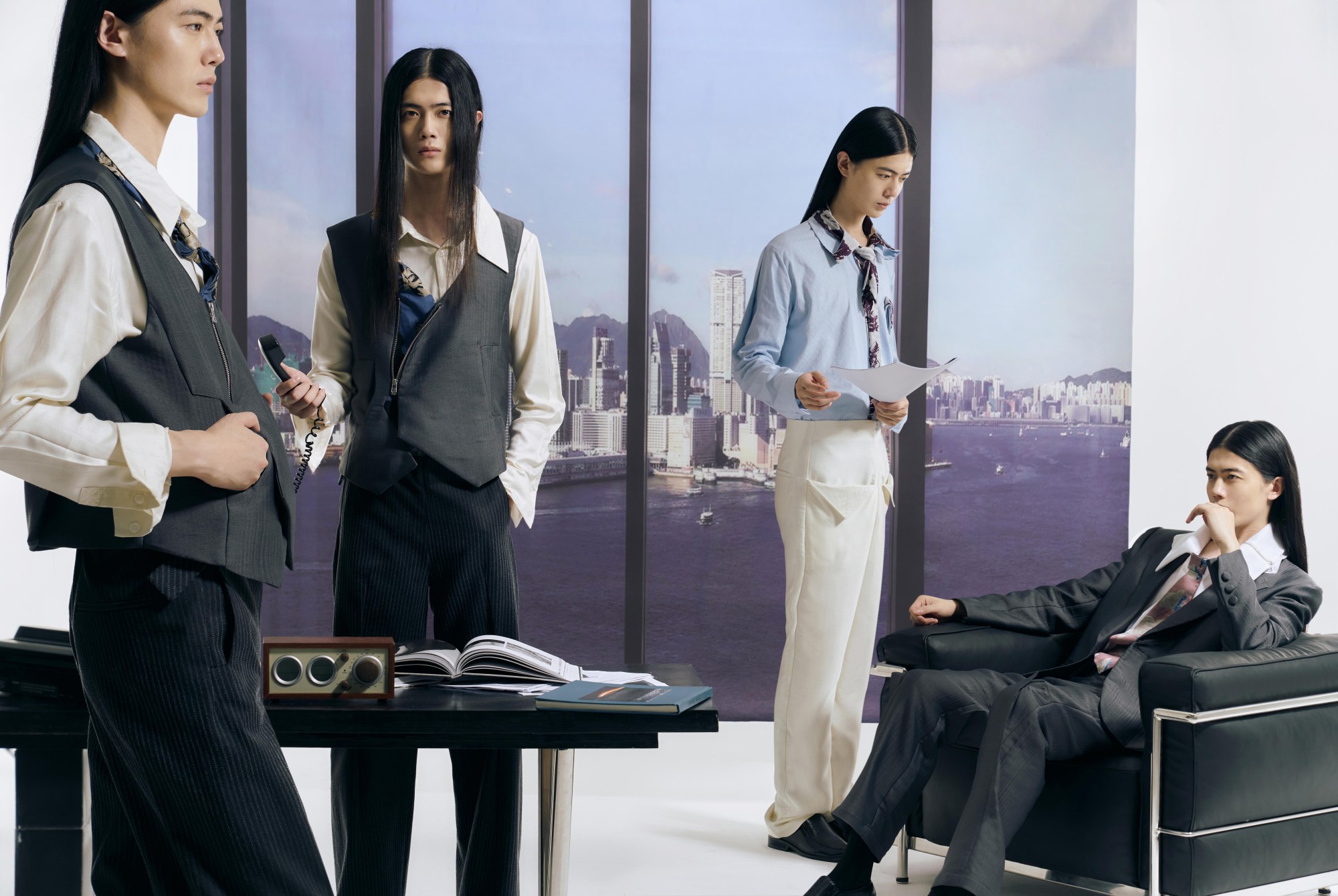This year has been unlike any other for fashion graduates, wherever they are in the world. The pandemic, naturally, has thrown a good number of curveballs, denying final year students the chance to physically showcase their work — something that for many has been a childhood dream.
London College of Fashion (LCF)’s graduating BA Fashion class is, of course, no exception to this solemn rule. Like their fellow students at CSM, RCA and elsewhere, the lack of access to the facilities and workshops on which they previously relied has posed unforeseen obstacles, forcing them to test the boundaries of their resourcefulness. Some worked with the material that they immediately had to hand, while others even forwent physical garment-making, generating their final collections using hastily-acquired skills on computer programmes like CLO 3D.
But it isn’t just the ongoing pandemic that makes this year so different for this fresh crop of fashion talent. They’re leaving the sanctuary of school at a time when conversations around social justice and equality, freshly galvanised by the Black Lives Matter movement and campaigns for equitable rights and protections for trans folks, have never been as prominent in the cultural agenda. The fashion industry, as a result, is now assessing its role in both implicitly and explicitly upholding oppressive structures. As the latest to enter its fold, it’s now more necessary than ever for graduating students to demonstrate awareness of, and engagement with, these generation-defining conversations. After all, being a fashion designer in 2020 isn’t just about making beautiful clothes — commenting on the world as it is and, perhaps, offering a proposal of what you think it could be is just as important.
That’s just what this year’s crop of LCF graduates have done, grappling with issues that include the disillusionment of urban life under late capitalism, presentations of East Asian female sensuality, and the modern refugee experience. Here, we learn more about the final collections of five of the school’s Class of 2020.

Aaron Esh, BA Menswear
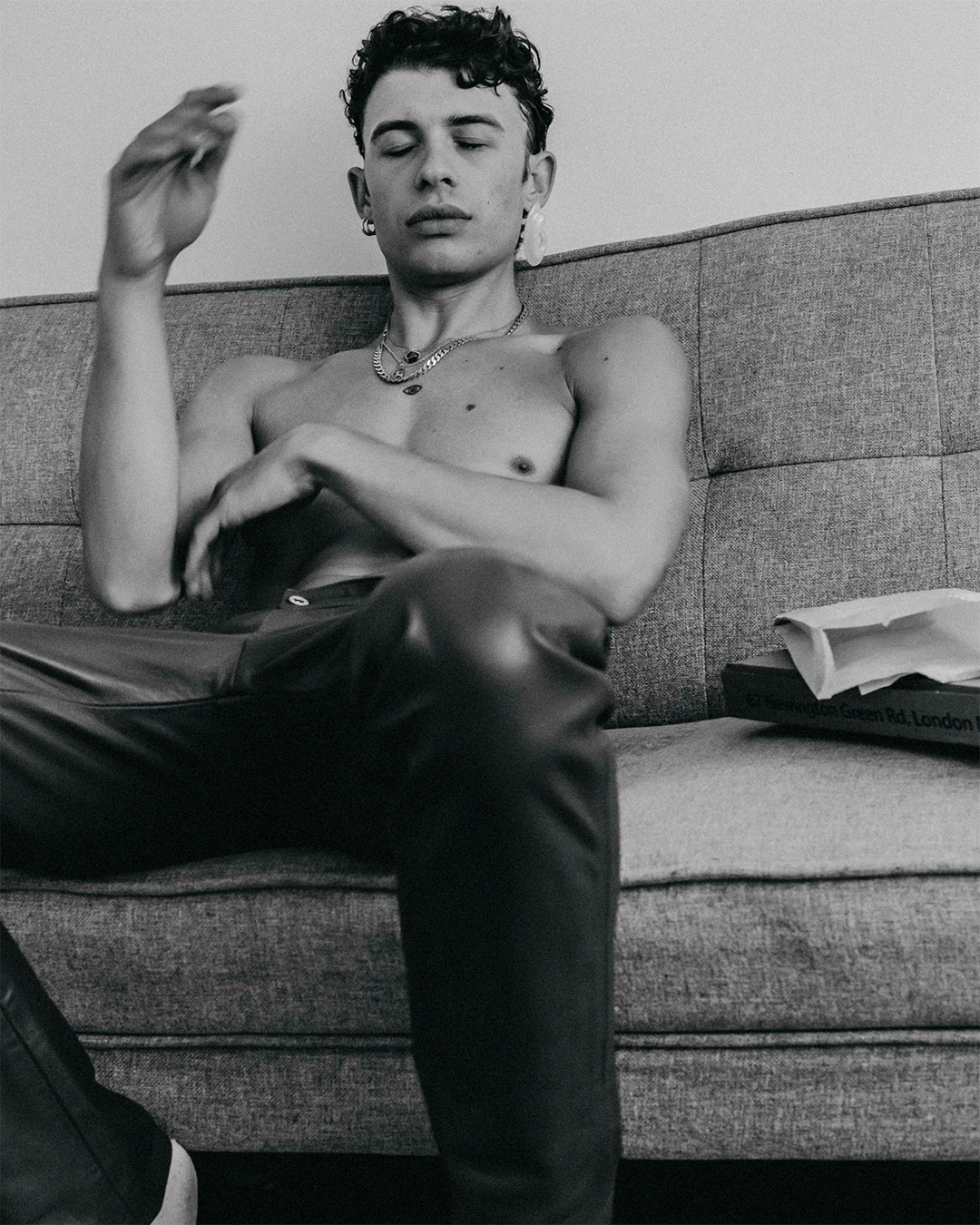
“Finishing a collection in isolation pushed me to find new solutions. Working remotely really encouraged new collaboration with the people who are close to me; my friend Charlie Parker modelled for me, we did the fittings on FaceTime. My flatmate Daniele Fummo shot my look book in our tiny flat in Haggerston with a piece of calico on the floor and no lighting equipment. Fiona Hartley 3D printed the jewellery from her home printer. All these aspects really contributed to a whole new energy of the collection I’d never anticipated.
“My BA work explores alienation and the burden of existing in a capitalist system, but there is now a real awakening in society of why we live it, and who for. The BLM movement has been further mobilised by the pandemic. The world being in lockdown and unable to work has allowed us to dedicate time to protest and think freely. This liberation has given way not only to a deeper understanding of systemic racism, but also of capitalism as a way of life and the demands it makes on us all.”
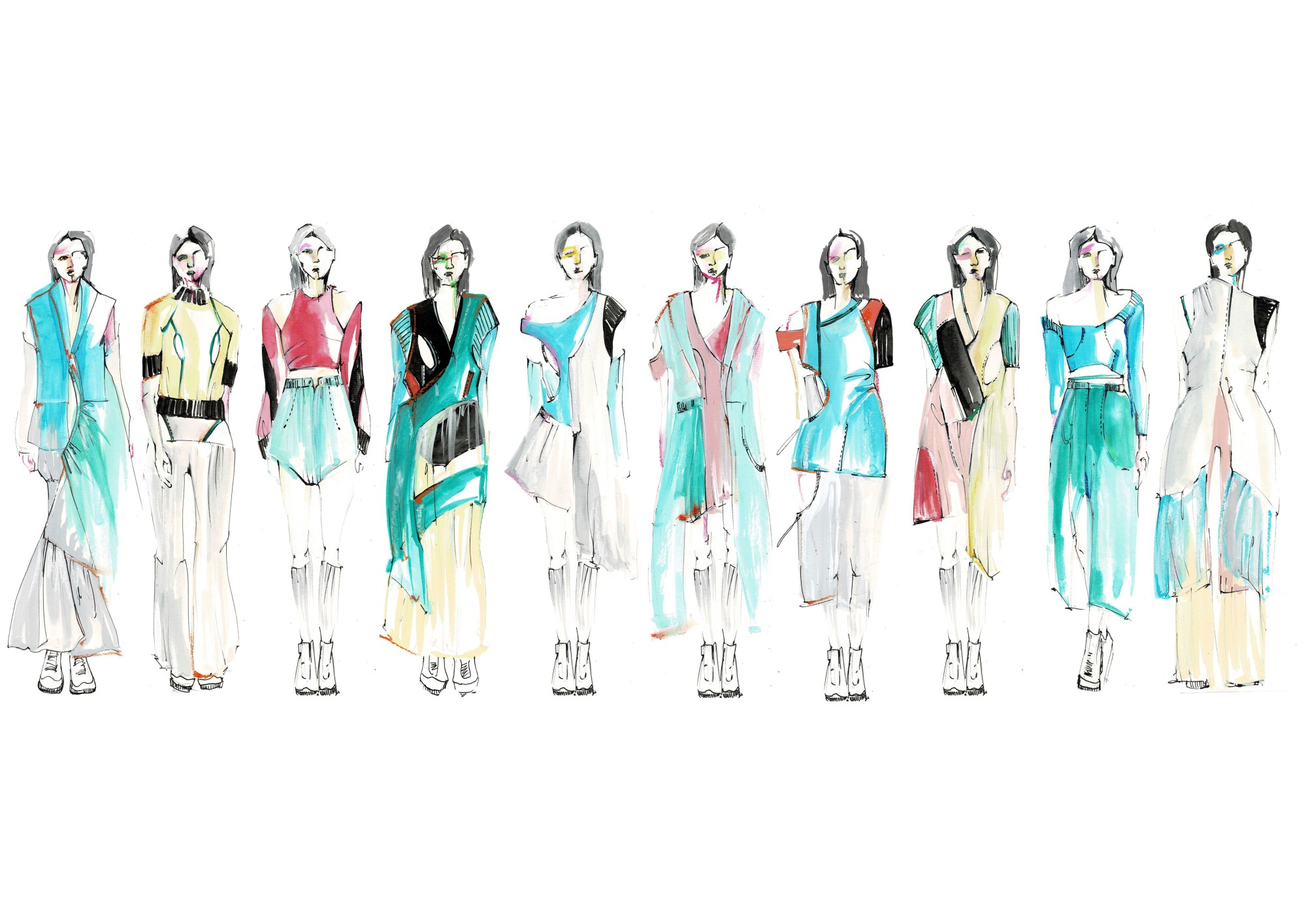
Seo Kim, BA Fashion Design Technology: Womenswear
“In the bathhouse, women are barely there — they’re silhouettes of feminine curves. They wipe their bodies dynamically and carefully, and they look very comfortable and beautiful. In the bathhouse, the concept of bathing is newly interpreted not only as an act of washing oneself but also as an act of sensitive self-care. I wanted to design clothes for a woman who embraces both her feminine and active self, portraying a juxtaposition of sensuality and sportiness.
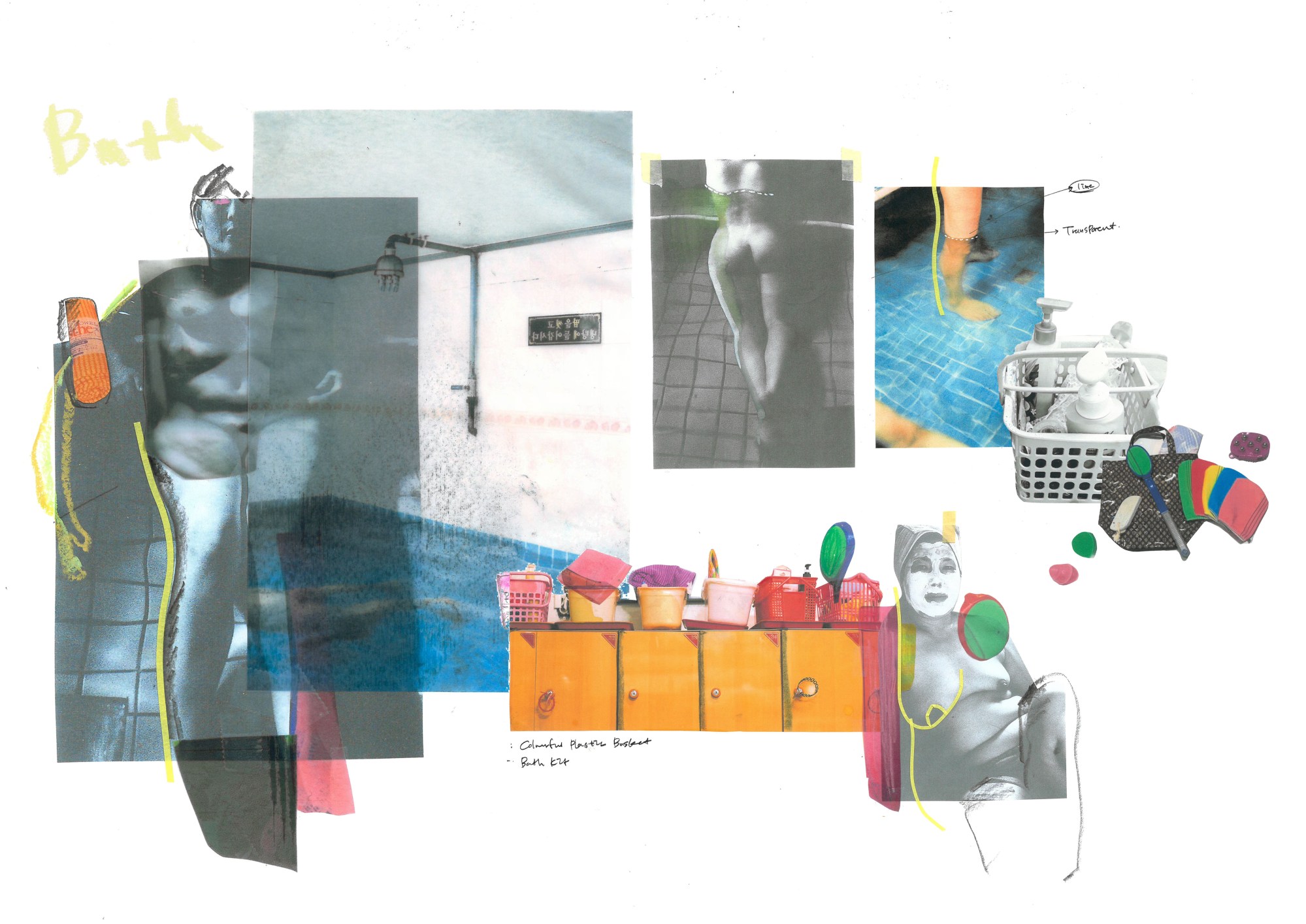
“I was planning to make a full line-up and present a physical showcase in London, but because of coronavirus, I was unable to use industrial sewing machines. Instead of making garments, I prepared a virtual showcase for my final collection, which allowed me to improve my digital software skills. It was really fun to experiment with, and it also allowed me to play with fabric properties and realise my final collection in 3D.
“Fashion is important for female sexual liberation, and I was strongly influenced by women’s sexuality. In terms of inspiration, I’m particularly interested in the work of Korean photographer Hwaya Park. It drove me to further research lingerie, the female body, and to explore the idea of the exposure of female flesh and sexuality. Through my final collection, I feel that I have developed my design identity. As a female fashion designer, I aim to explore the balance of femininity and a relaxed sensibility.”
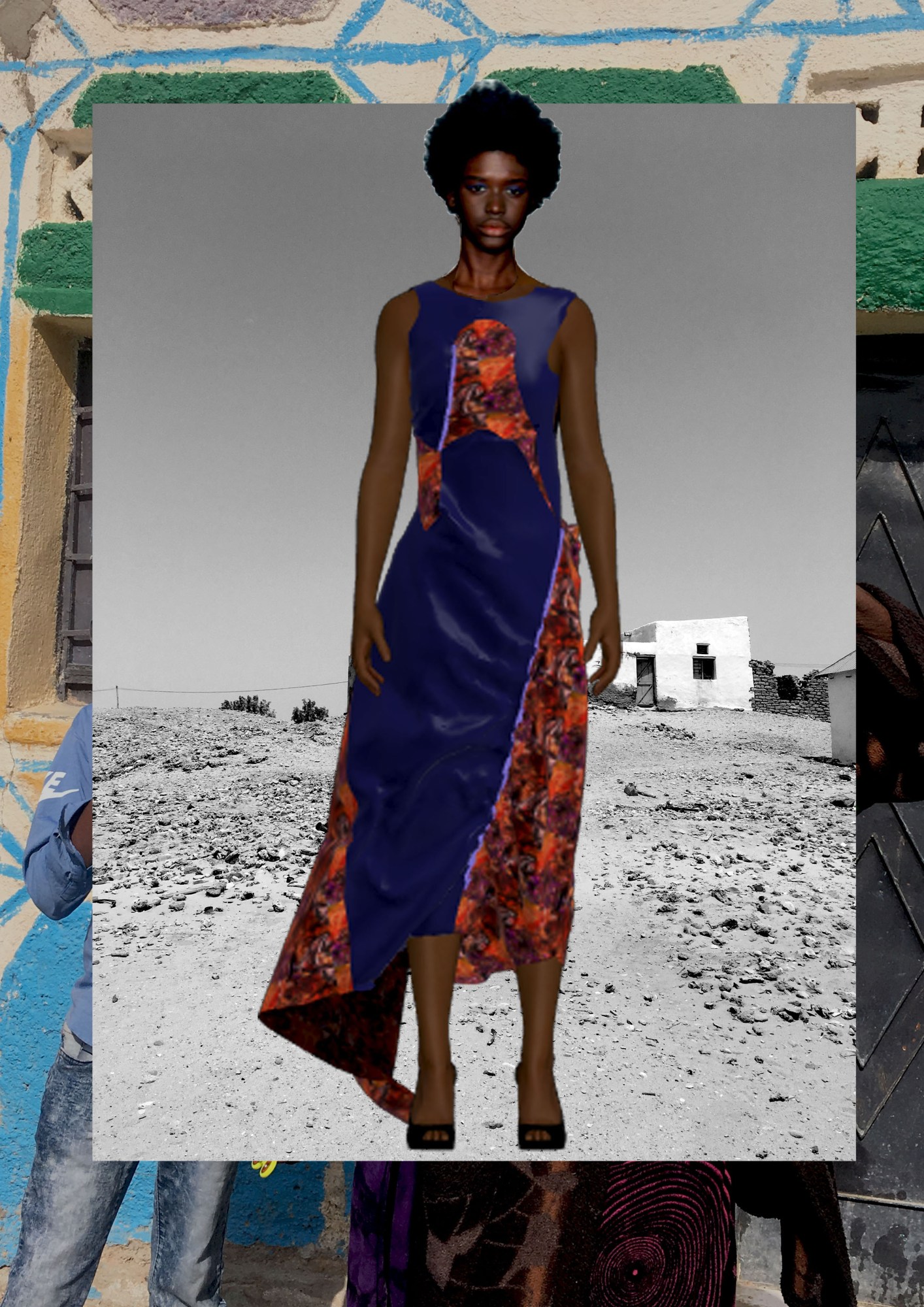
Rana Mohamed, BA Womenswear Design Technology
“My collection is called “What is your Qabil? (Tribe)”, and it recalls the refugee experience of my mother who was forced to leave her home in Somaliland aged just 18 following the civil war. I will be re-using the traditional clothes that my mother had when she first settled in Amsterdam, evoking displacement and healing.
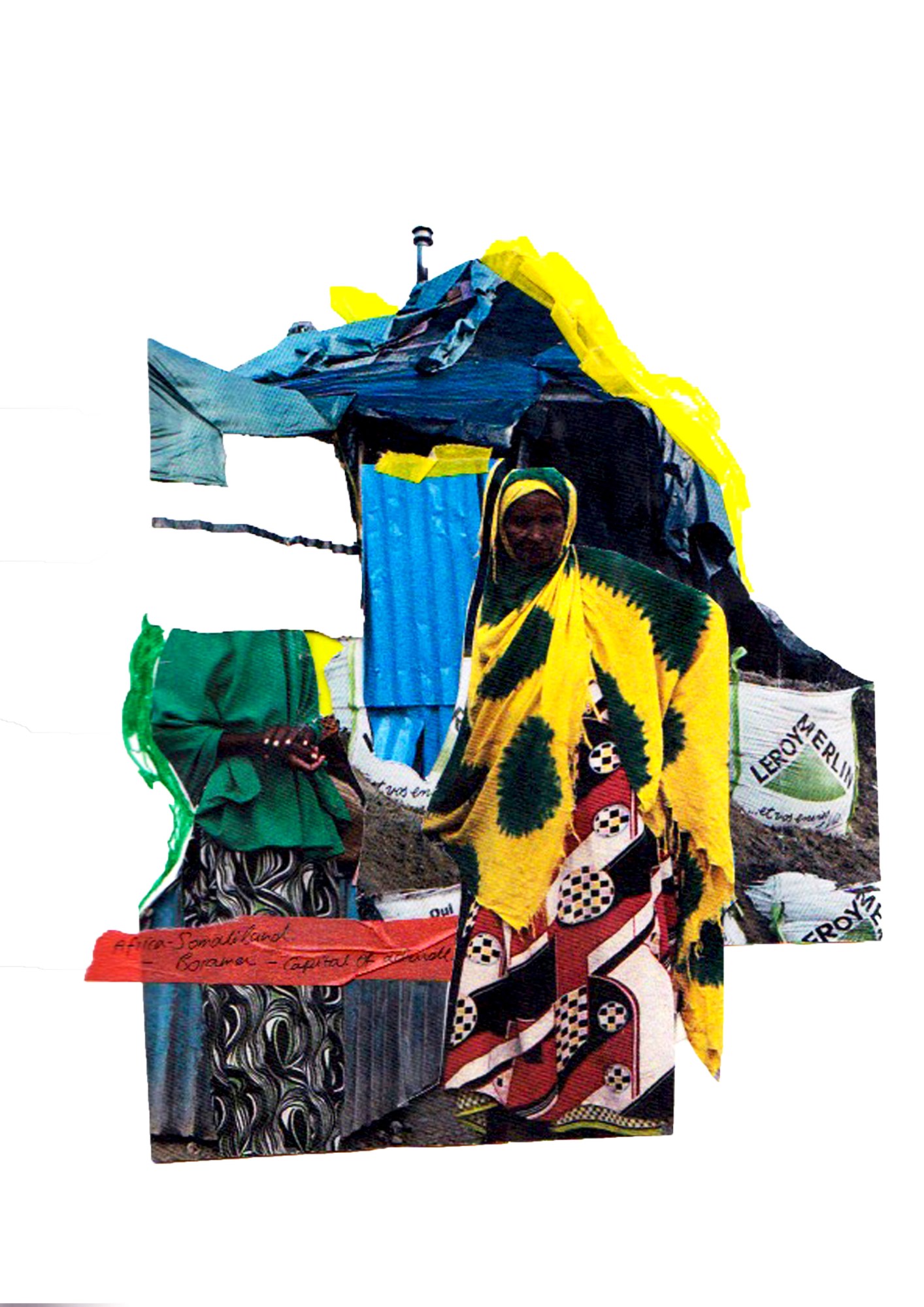
“As my collection is about culture, diaspora, the refugee experience and sustainability, issues of race and politics are central to my work. It’s important to have these sorts of conversations. I feel like they don’t get acknowledged enough. Being Somali is such an important part of my identity. It’s all I’ve ever wanted to know more about, as I feel like I wasn’t exposed to Somali culture as a child. This collection has been a real advantage for me to know more about my culture and my mother’s story.
“The pandemic has definitely opened many people’s eyes and has created a ‘new normal’. As a final year student, working from home was hard for me to adjust to. I live with my family, which meant there was a lack of workspace and access to facilities. That said, one pro has been learning to use new resources to find ways to create fashion. We were taught how to use a programme called CLO 3D, which allows you to create patterns and make garments on an avatar using the equipment that we would normally use in real life. I also really enjoyed creating prototypes at home, using clothes from my cupboard, or even duvets, to drape on the mannequin. It shows how the things we have at home that we think are useless can come in handy at times like these.”
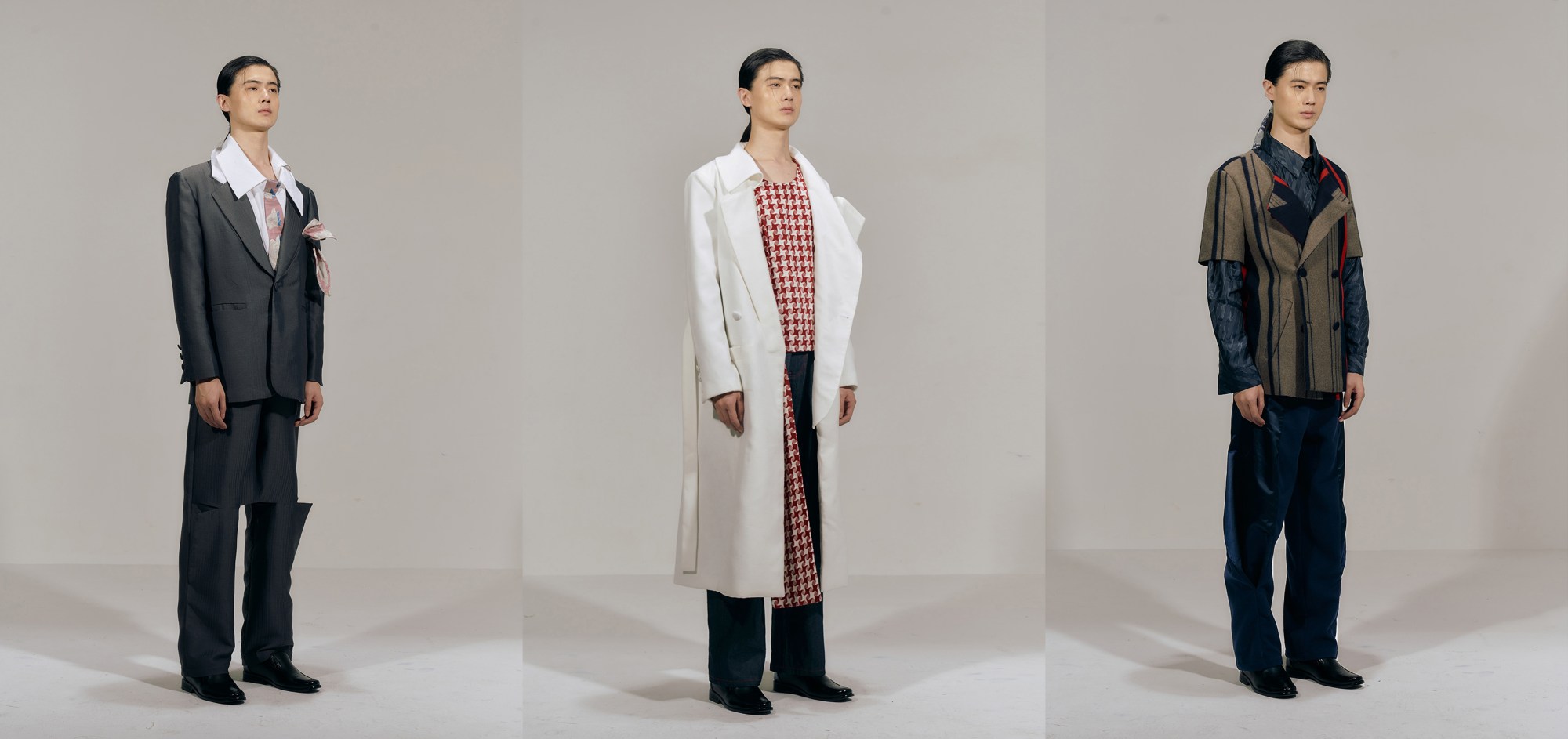
Minghao Tang, BA Menswear
“My collection, “Nonsense Makes Sense”, takes inspiration from my childhood memories of Mo Lei Tau, a Hong Kong subculture which features in director Stephen Chow’s movies. They show Hong Kong office commuters overcoming social issues in their daily lives. I have composed a Mo Lei Tau style screenplay and followed a day to night storyline. The purpose was to create a set of garments with a distinctive aesthetic that are also practical for today’s office commuter.
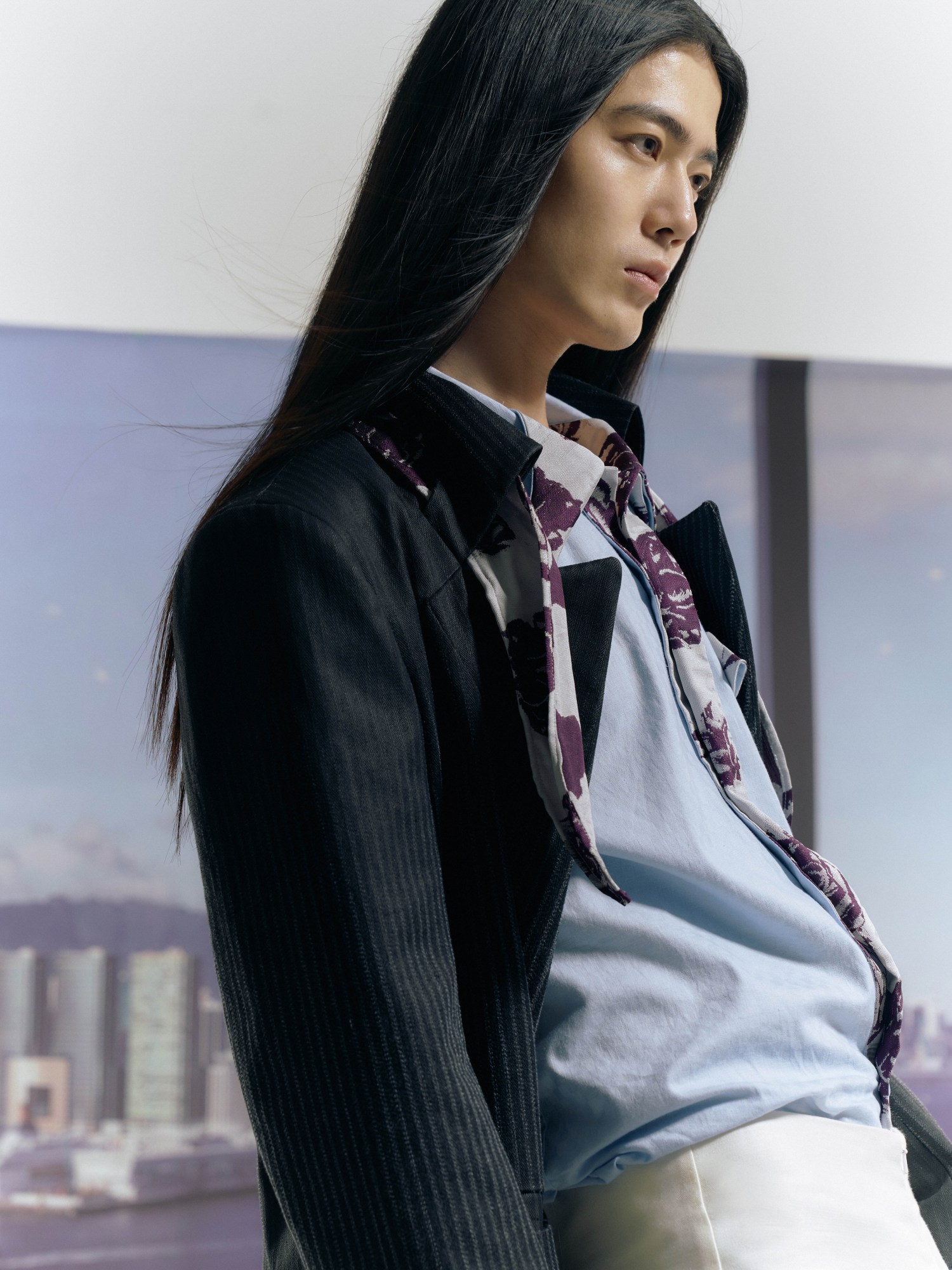
“I am interested in how they can overcome issues of social conformity and an authoritarian workplace. When travelling to school during rush hour, I would observe how commuters dressed for work. Inspired by this, I tried to introduce designs that can simplify their daily routine and empower the commuter to confront these issues. One way I tried to achieve this was by identifying ways of combining the function of casual wear with the finishing details of formal wear. I am also interested in the relationship between Cantonese cultural identity and contemporary fashion. Studying abroad for the first time, I felt a slight sense of alienation as I felt that people had little knowledge of my culture.
“It is more important than ever for my generation to speak out about current social issues. Fashion can have a positive influence in raising awareness around civil rights. Coming from an Asian background, I felt more comfortable discussing these issues like gender diversity and sexuality at school. Though I’m a menswear designer, I don’t have the mindset that my garments should incline towards men. People should not feel pressured into choosing garments that conform to a binary gender category. My graduate collection aims to empower people to express their identity, particularly in more conventional social situations. I am passionate about exploring my Cantonese cultural identity and try to include references to this in my work. “
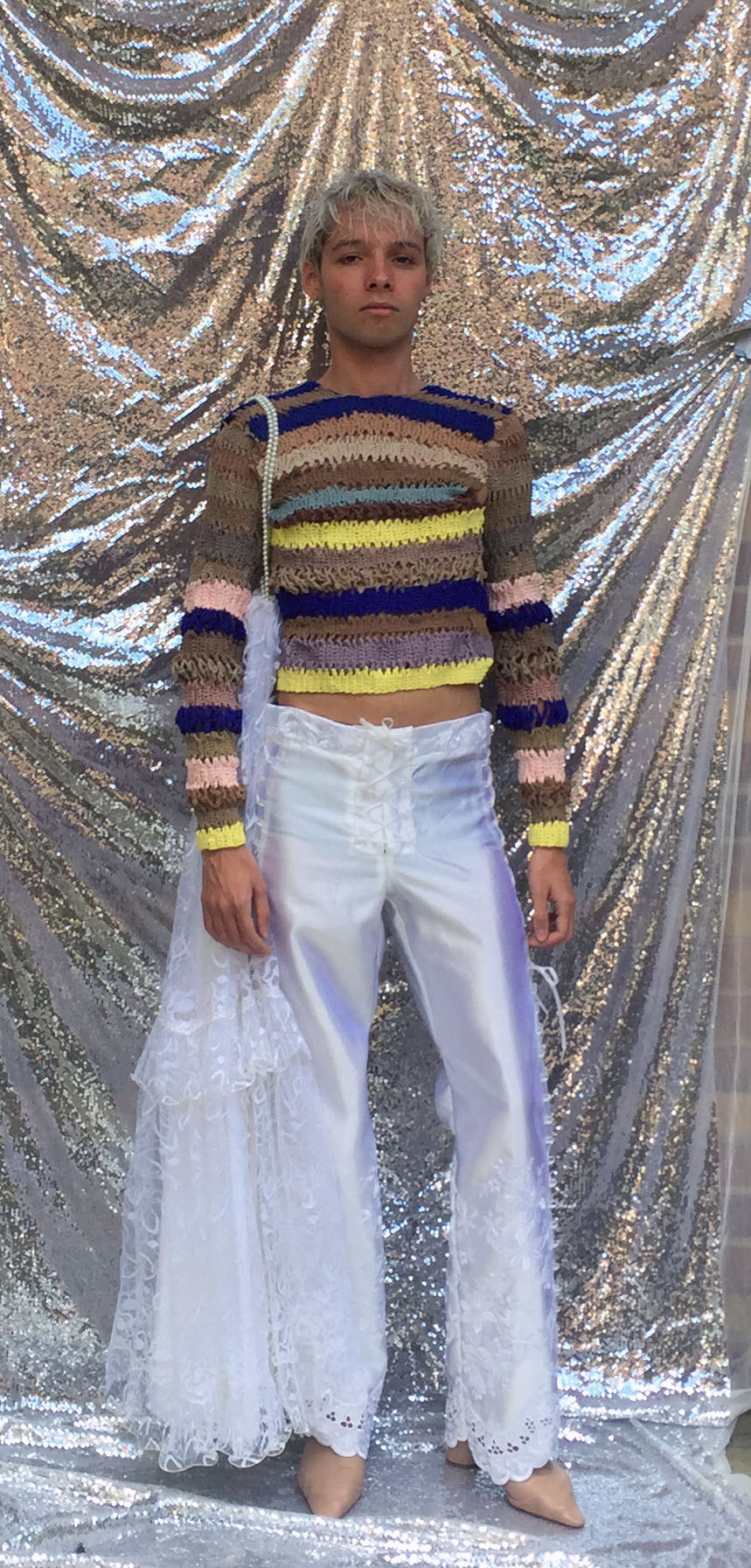
Linnea Nordquist, BA Menswear
“For my collection, I used methods of repurposing materials that once were very important, but ended up losing their value. Nylon tights and wedding dresses became the core of the collection, as did the performative act of dressing for weddings — this connected well with my love for performance and the joy of dressing up. With my childhood memories of the Eurovision Song Contest and ABBA on the stereo, it merges my first fashion memories with my love for traditional craftsmanship.
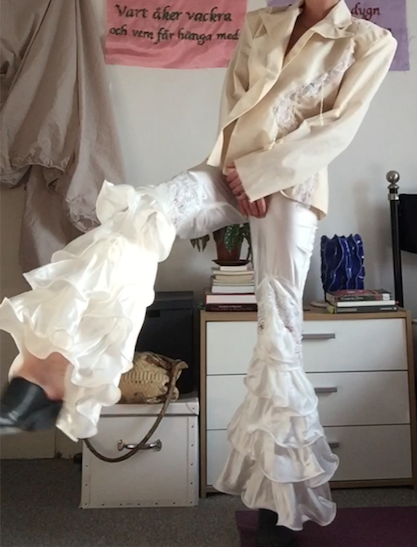
“As my methods were based around the materials that I was using, the limitations that came with working from home during lockdown were not a huge problem for me, and I spent my time working with what I had. I used old discarded nylon tights as yarn for my crocheted garments in the collection. The process was time-consuming but felt very important in these times where we really need to give objects more value and worth. Up-cycled wedding dresses were another important component, representing the time and love that is put into one special day. I found it very beautiful to continue the story of the garment by reusing the fabric, giving life to an object that is usually only worn once.
“Every fashion brand now needs to be developing new methods and alternative environments of working. [Brands should hire] young designers that come with a fresh perspective [because] many young people can see the industry with fresh eyes and focus on what needs to be changed.The importance of a creative collective is key in a working environment and that the community needs to work with a diverse group of people to achieve the best things. I want to be a part of this, and I cannot wait to be able to show people what I can do.”
